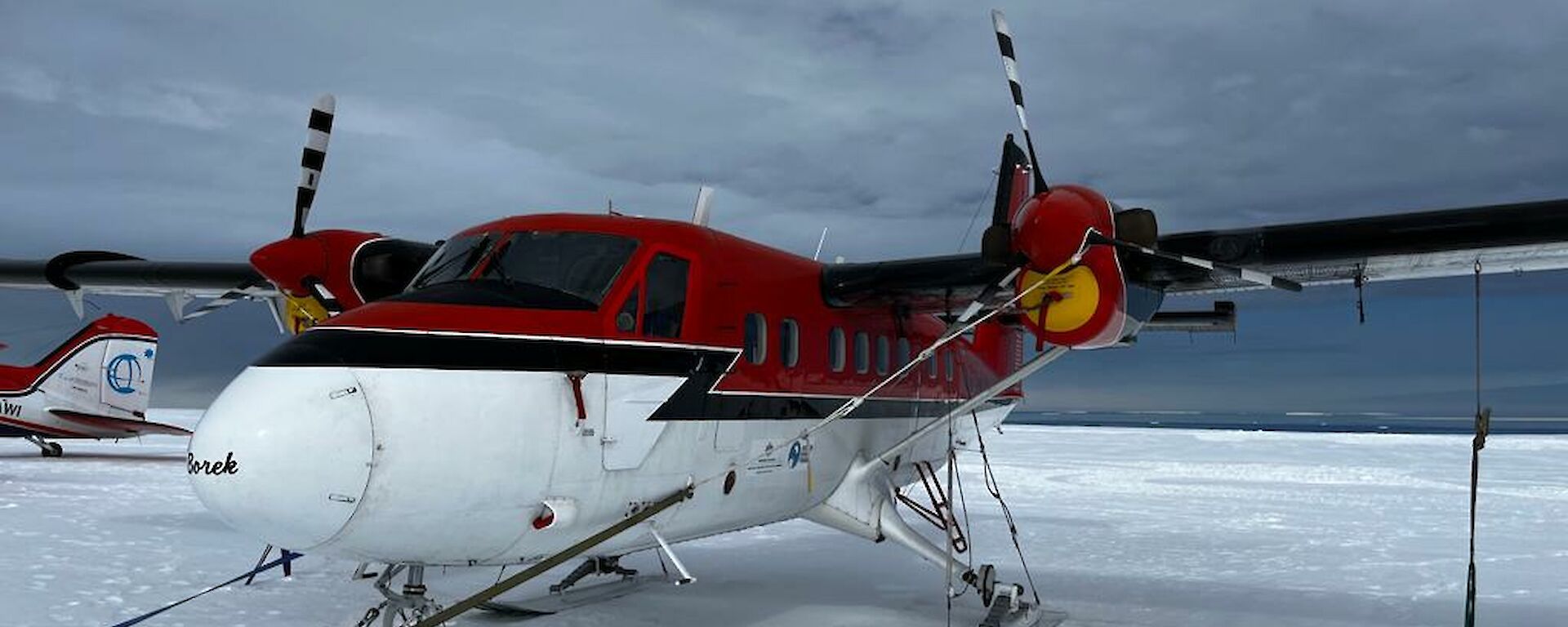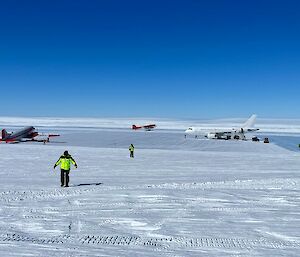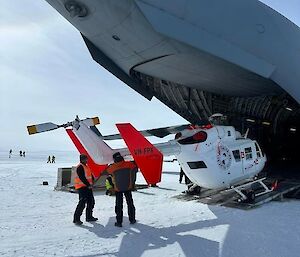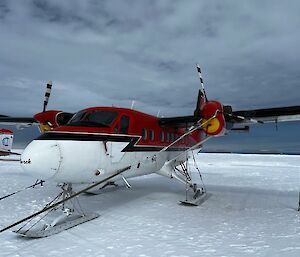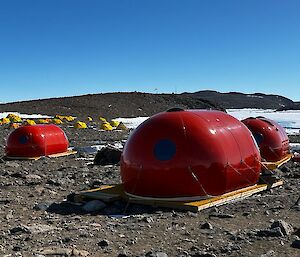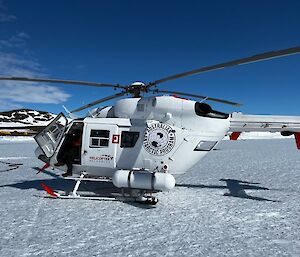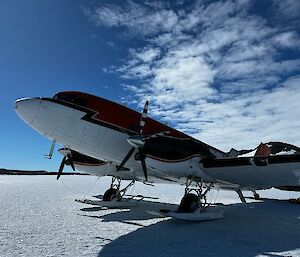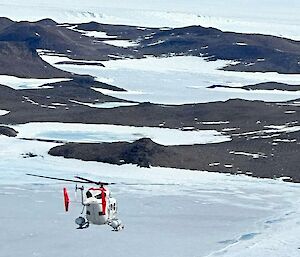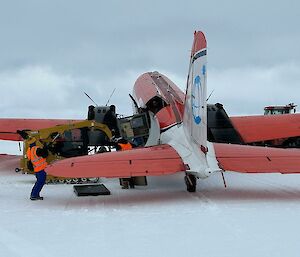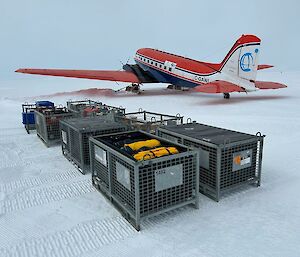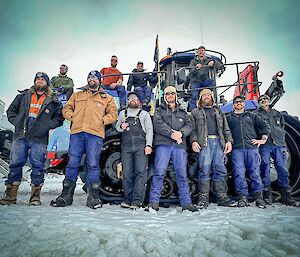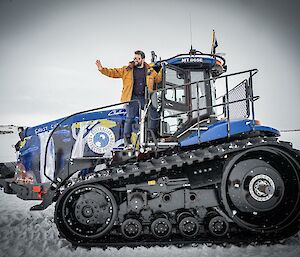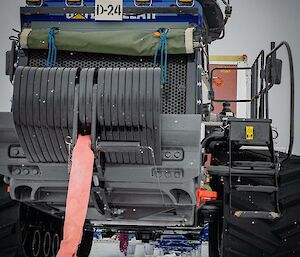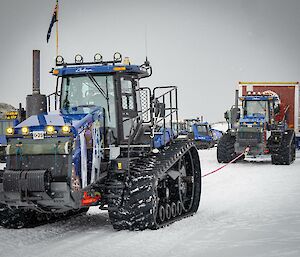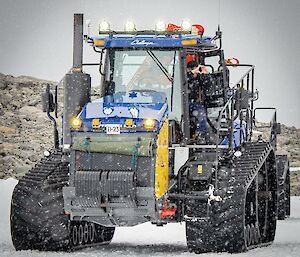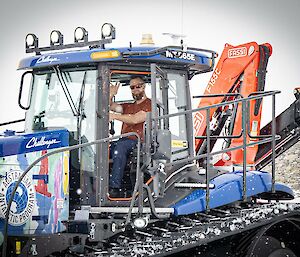Antarctica is 4.5 hours flight time south of Hobart on an Airbus A319 jet. It is not an easy evolution to land a wheeled aircraft on the blue ice runway at Wilkins aerodrome that moves on a glacier two metres per year and where the nearest alternate runway is back in Hobart.
That’s the equivalent of flying from Sydney to Perth, spending two hours on the ground then returning to Sydney – all without refuelling. When you throw in the challenges of identifying a suitable weather window, you start to appreciate what an incredible team the Australian Antarctic Division (AAD) and Bureau of Meteorology (BOM) has in order to make this happen.
So far this season the A319 has transferred personnel and cargo ten times from Hobart to Wilkins and the C-17 Globemaster has visited four times bringing over 50 tonnes of cargo and two helicopters to support the station and deep field science camps.
However, that is not the extent of aviation operations in the Australian Antarctic Program (AAP). The intercontinental services are supplemented with the intracontinental services at Casey station. This includes two Basler BT-67 ski-fitted aircraft, one DHC-6 Twin Otter ski-fitted aircraft and two BK-117 helicopters.
If you think flying from Hobart to Wilkins aerodrome (4.5 hours) is challenging, spare a thought for the Kenn Borek Air (KBA) pilots who fly the Basler’s and Twin Otter from Calgary, Canada through North and South America to Punta Arenas on the southern tip of Chile.
From here they line up with aircraft from other Antarctic national programs to cross the Drake Passage to Rothera, a short gravel strip with limited apron space, where sometimes the runway's extended centreline is blocked by icebergs. It is then a matter of waiting for weather windows to open up across the South Pole (where temperatures can be as low as −50 degrees Celsius) to the American base at McMurdo and then onto Casey Ski Landing Area. The total journey is 2900 nautical miles from Calgary to Punta Arenas, 880 nautical miles across the Drake Passage and a further 3000 nautical miles from Rothera to Casey via the South Pole. The transit can take anywhere from 2-3 weeks to arrive in East Antarctica.
The AAD's helicopters are airlifted from Hobart by C-17 Globemaster, then transit 240 nautical miles west of Casey Station to a remote field camp, Edgeworth David, located at Bunger Hills on the Denman Glacier. To set up the camp for this summer, with 27 of the world’s leading scientists, almost 39 tonnes of equipment, supplies and food have been transported by C-17 to Wilkins, transferred by snow vehicles and track trailers 70 kilometres to Casey Station, then loaded into Basler’s for the 240 nautical miles, or 1.5 hour flight, to Bunger Hills. Once at the camp, some of the equipment and people are then transferred by helicopter to other remote sites generally within 50 nautical miles of the Edgeworth David camp. It is a huge undertaking by the AAD and the Australian Government to support science.
Helicopter Resources chief pilot Dave Lomas, who will be based at Edgeworth David for the summer research season, said the BK117 helicopters were coping well with the extreme conditions.
"The BK117 has really been proving itself down here," he said.
"We have been able to do things in a single flight that would have required two or three trips and possibly external loads with an AS-50 Squirrel.
"I am really impressed with how they are handling it. Forecasting support has also been fantastic from the BOM team at Casey”.
So why are we doing all this? Antarctica is one of the most unique (and harshest) environments on the planet, but it also holds many secrets regarding climate change.
Scientists are hard at work involved in many terrestrial and maritime campaigns to monitor, record, analyse and understand the history of the region, what is happening right now and projecting the findings into the future. Everything from ice core drilling (up to three kilometres – the equivalent of a million years of history), rate of change of glaciers, seismic monitoring, impacts on the atmosphere and oceans and changes to mammals, birds, krill and other key ecosystems.
Aviation services are just an enabler for this science, but a critical one. The aircraft in the AAP provide the logistics and personnel pathways between stations. A flight in a Basler from Casey to Mawson takes around 7.5 hours – the equivalent distance of flying from Townsville to Melbourne. Without these air routes, the stations would only be visited by Australia’s research and supply vessel (RSV) Nuyina once per summer season during annual resupply.
The stations are not accessible during winter because the cold temperatures prevent aviation operations and the sea ice stops ships from getting close enough to the stations for helicopter fly-off. The Aviation Ground Support Officers (AGSOs) have to work extremely hard in difficult conditions to prepare, groom and mark out the skiways and Wilkins aerodrome. This involves an extensive array of heavy plant equipment, not dissimilar to what you might see in some mines or ski resorts. It can be frustrating work when a blizzard arrives with winds of 80 - 100 knots that bury your skiway or runway, requiring you to start again!
To prepare Wilkins aerodrome after the Antarctic winter takes over two months to move snow and calibrate the runway to receive jet aircraft. This is very difficult and isolated work in quite austere accommodation. There is no Fly-In-Fly-Out (FIFO) here for our teams! However, it is extremely rewarding and we often welcome back returning expeditioners who, in the spirit of previous Antarctic explorers, just keep coming back.
There is something very special about being here and understanding the importance of the work.
- Marc Ware - Casey Station Aviation Manager and Operations Coordinator

